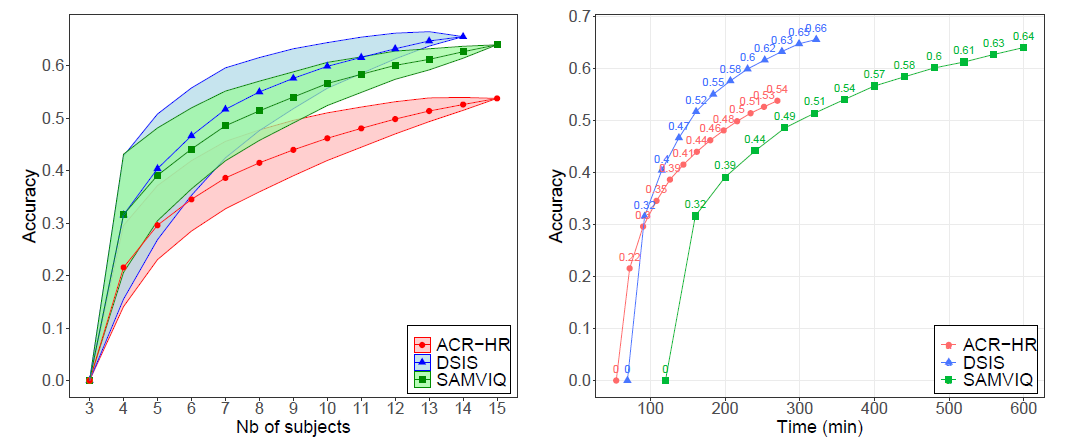Comparison of Subjective Methods for Quality Assessment of 3D Graphics in Virtual Reality
Published in ACM Transactions on Applied Perception (TAP), Vol. 18, No. 1, Article 2, 2021
Numerous methodologies for subjective quality assessment exist in the field of image processing. In particular, the Absolute Category Rating with Hidden Reference (ACR-HR), the Double Stimulus Impairment Scale (DSIS), and the Subjective Assessment Methodology for Video Quality (SAMVIQ) are considered three of the most prominent methods for assessing the visual quality of 2D images and videos. Are these methods valid/accurate to evaluate the perceived quality of 3D graphics data? Is the presence of an explicit reference necessary, due to the lack of human prior knowledge on 3D graphics data compared to natural images/videos? To answer these questions, we compare these three subjective methods (ACR-HR, DSIS, and SAMVIQ) on a dataset of high-quality colored 3D models, impaired with various distortions. These subjective experiments were conducted in a virtual reality environment. Our results show differences in the performance of the methods depending on the 3D contents and the types of distortions. We show that DSIS and SAMVIQ outperform ACR-HR in terms of accuracy and point out a stable performance. In regard to the time-effort, DSIS achieves the highest accuracy in the shortest assessment time. Results also yield interesting conclusions on the importance of a reference for judging the quality of 3D graphics. We finally provide recommendations regarding the influence of the number of observers on the accuracy.

